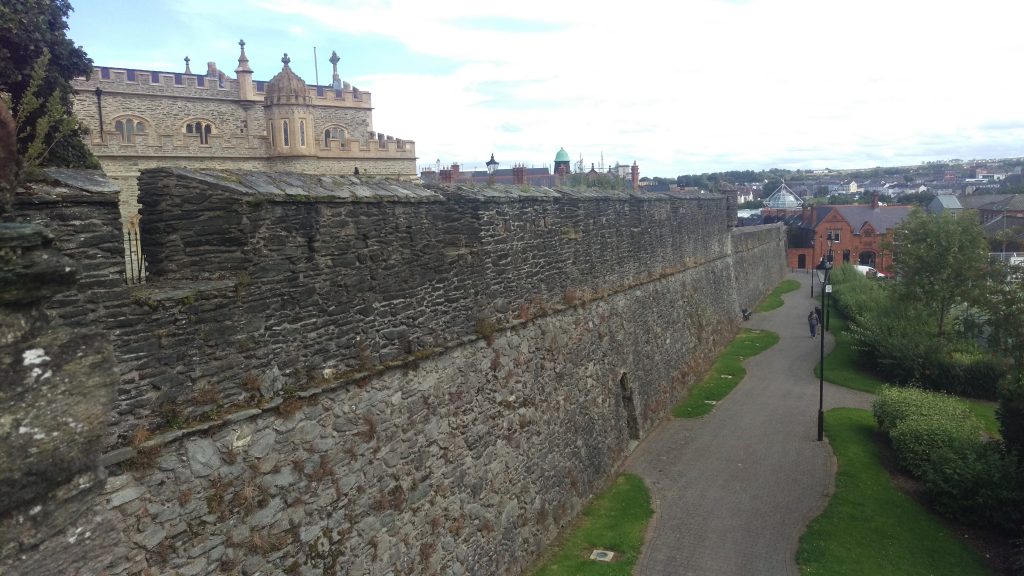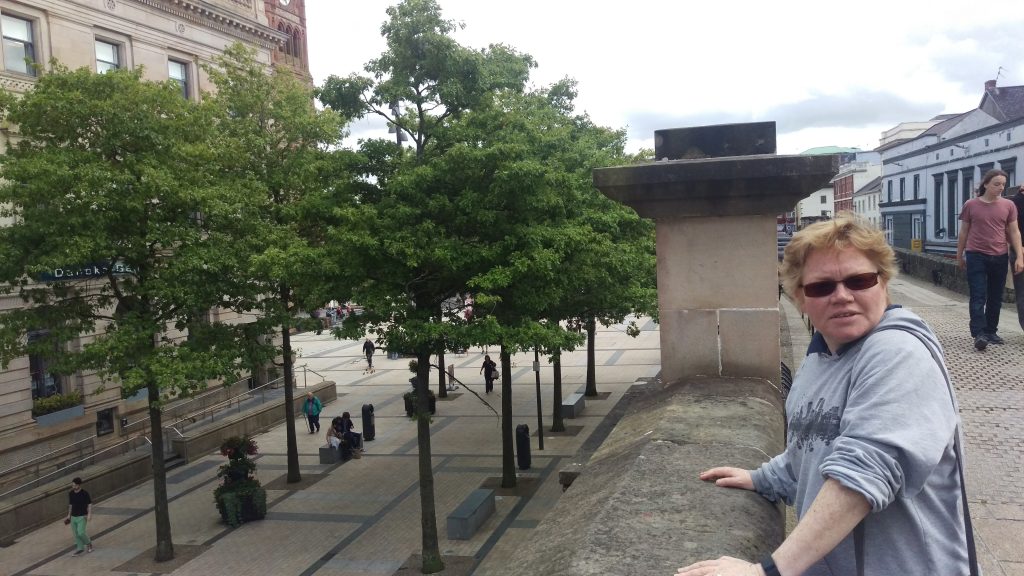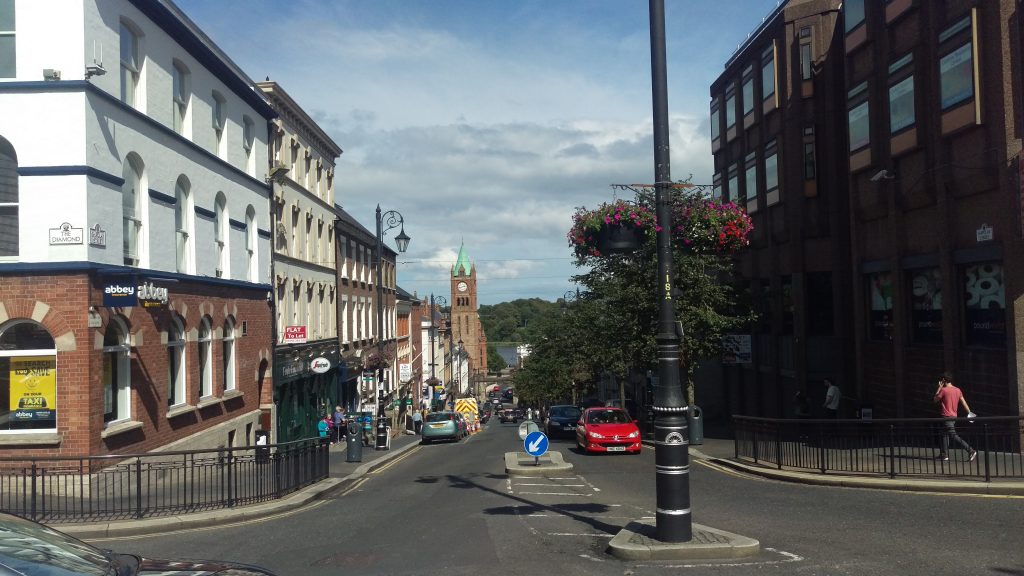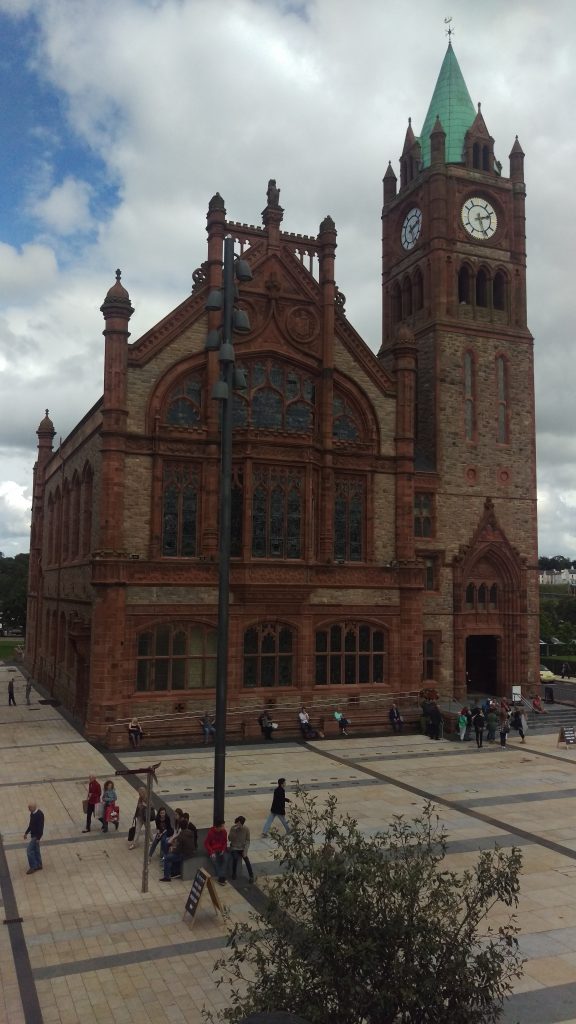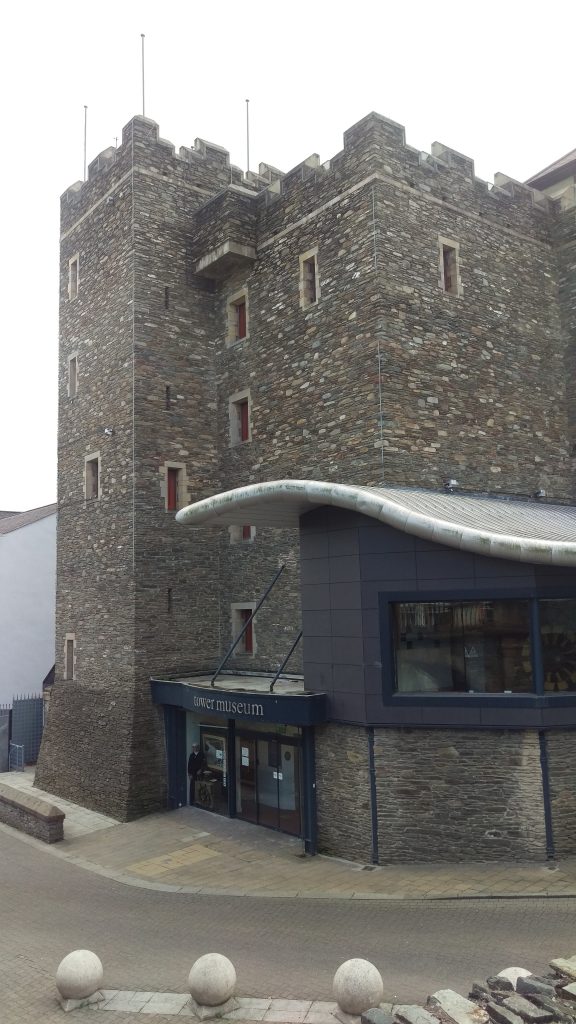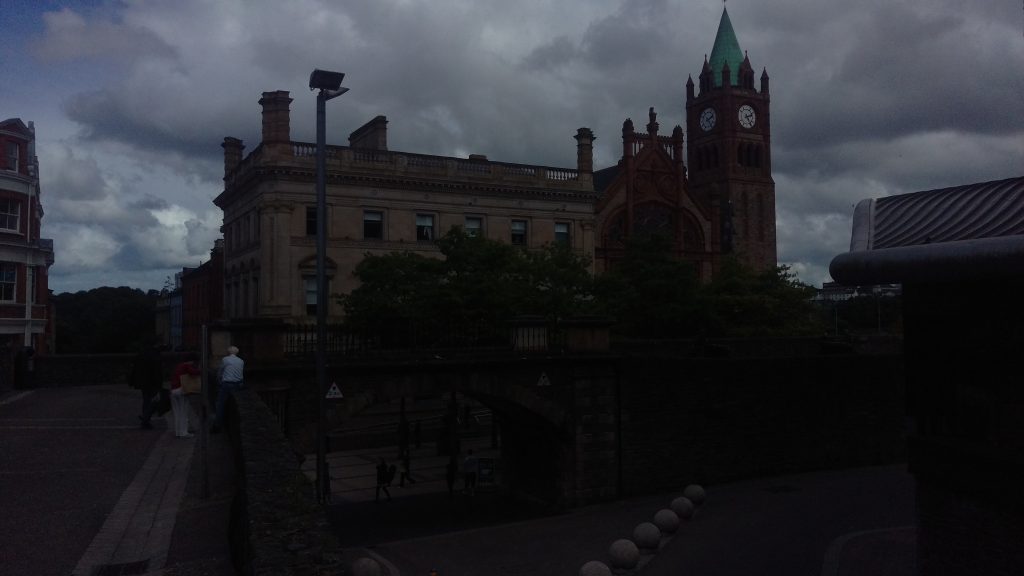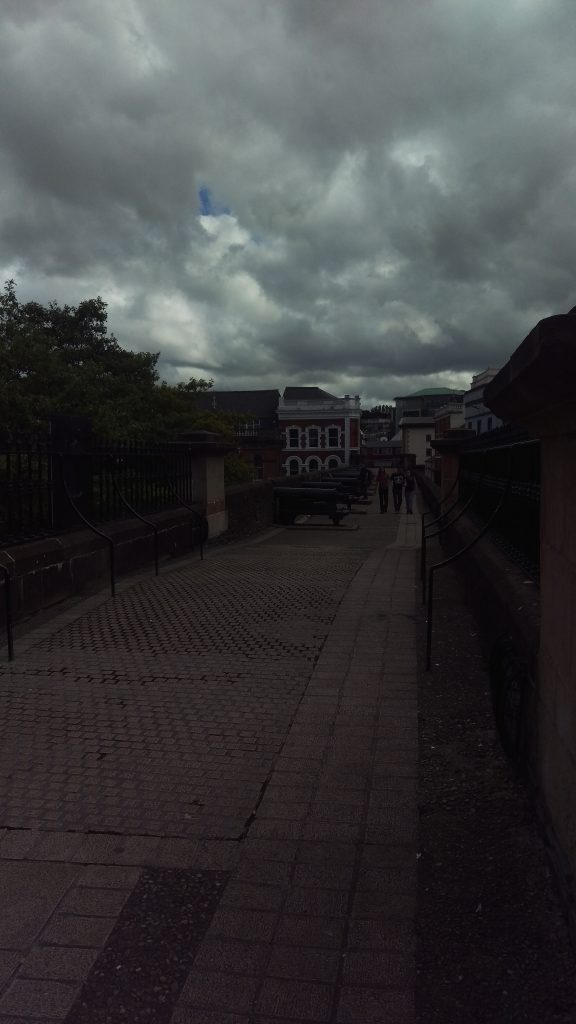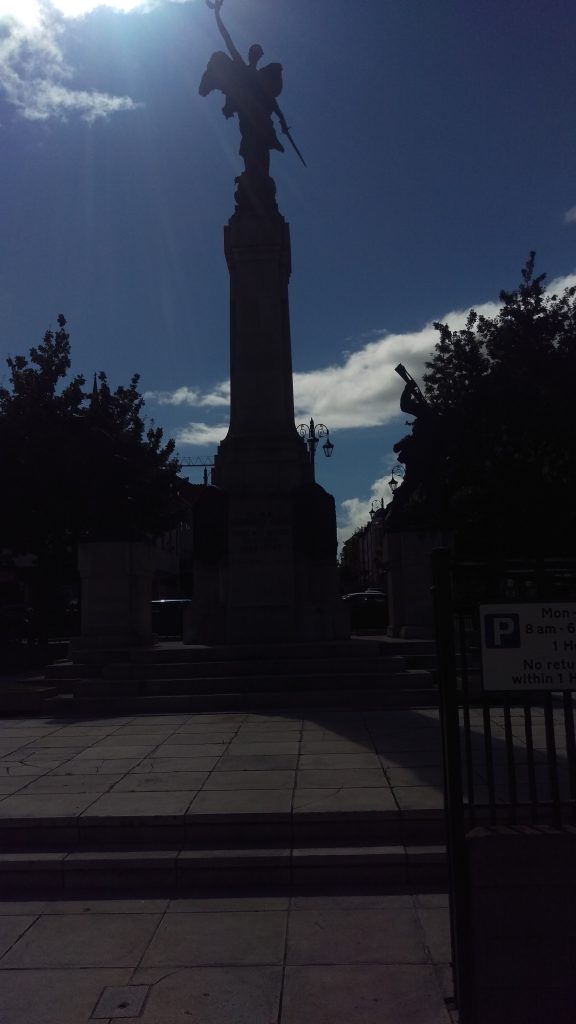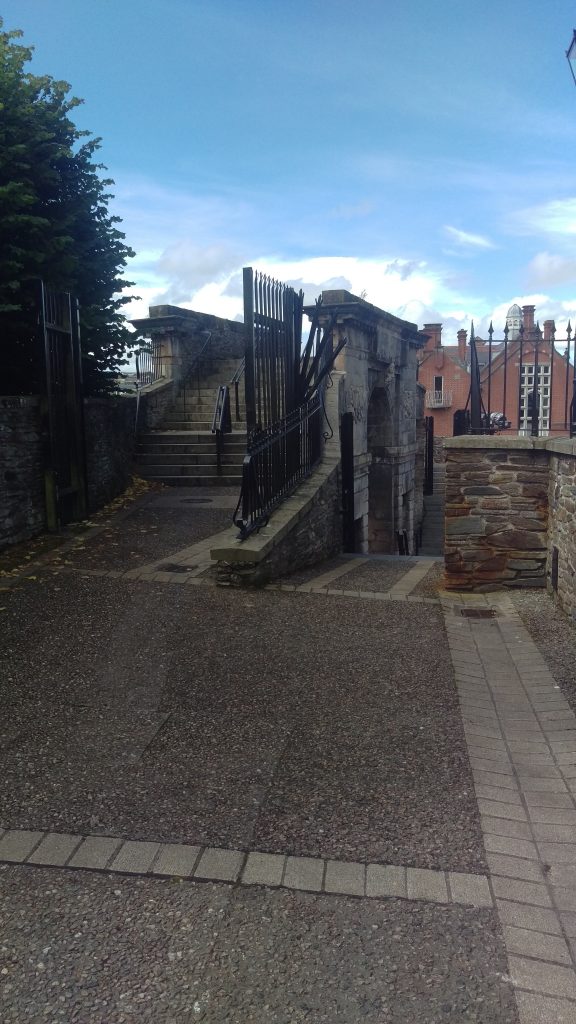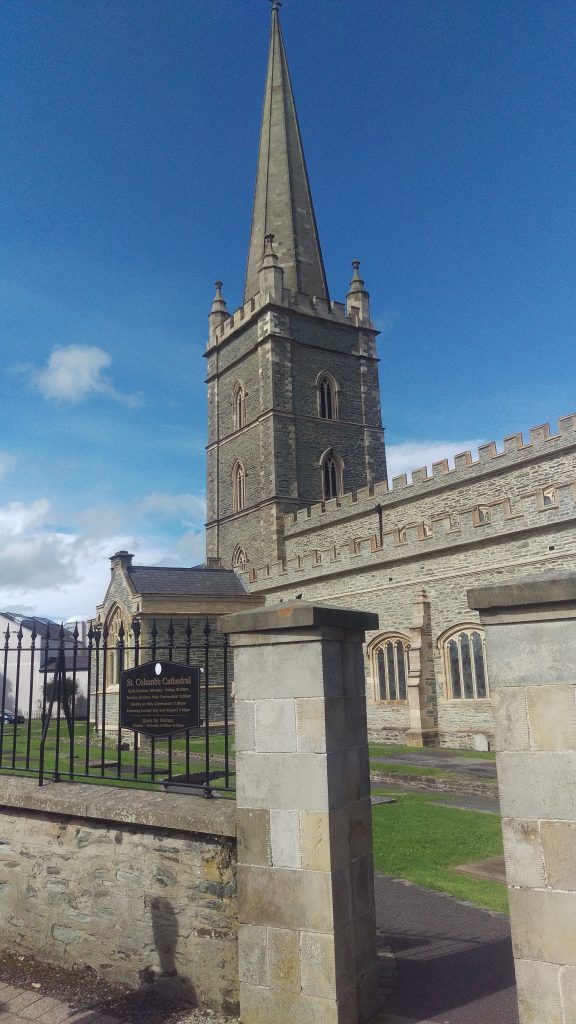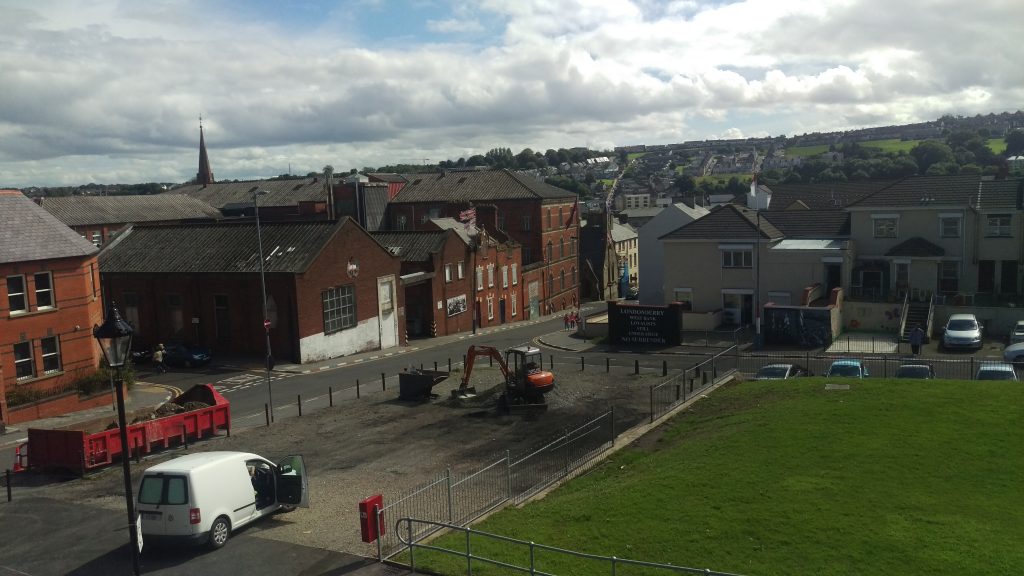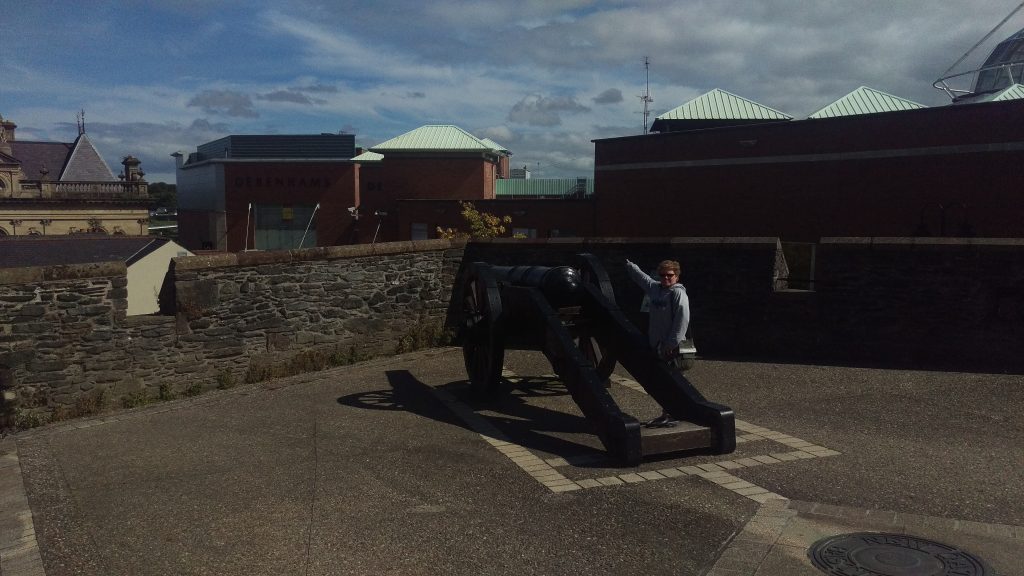This week we travel to Derry with James Shields.
In the summer of 2015, we found ourselves in the walled city of Derry (or Londonderry, if you prefer). It’s a fascinating place, steeped in history, and well worth a visit.
It is the only walled town left in Ireland, and the only completely walled town in Ireland and the UK. The walls were built between 1613 and 1619. It’s one of the few cities in Europe never to have had its fortifications breached, despite a very famous siege in 1689 that still provokes fiercely partisan reactions.
Parking next to the River Foyle, we approached the city walls by walking up Bridge St, we passed through Ferryquay Gate, one of the original four gates and accessed the top of the wall from Market Street. We were immediately presented with a pair of cannons, sitting atop one of several defensive buttresses that are placed around the walls. These ones were pointed at a branch of Debenham’s that had no chance.
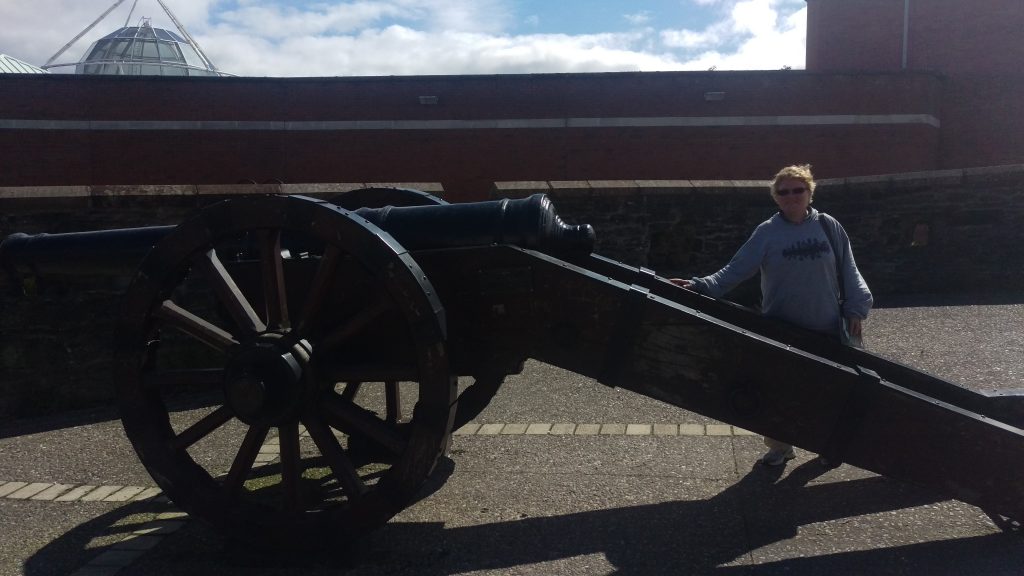
We then walked back over the gate we’d come through, along the wall enjoying the impressive view of the city that has grown up around the walls.
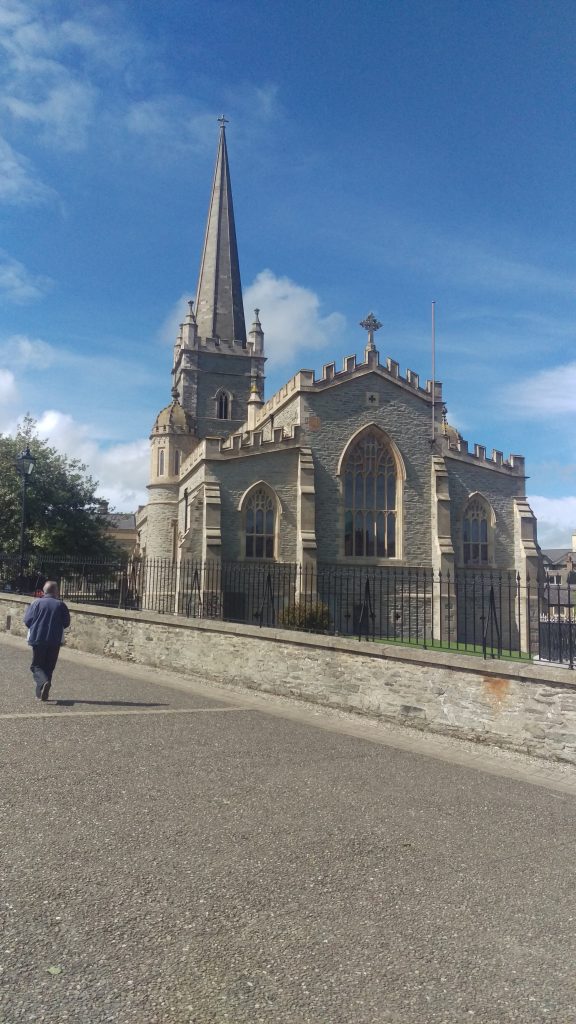
Continuing on, we came to St Columb’s Cathedral, a gothic church built in 1633.

Next we passed over Bishop’s gate which offered a fine view of the courthouse, and the aptly named “Bishop Street Within”.
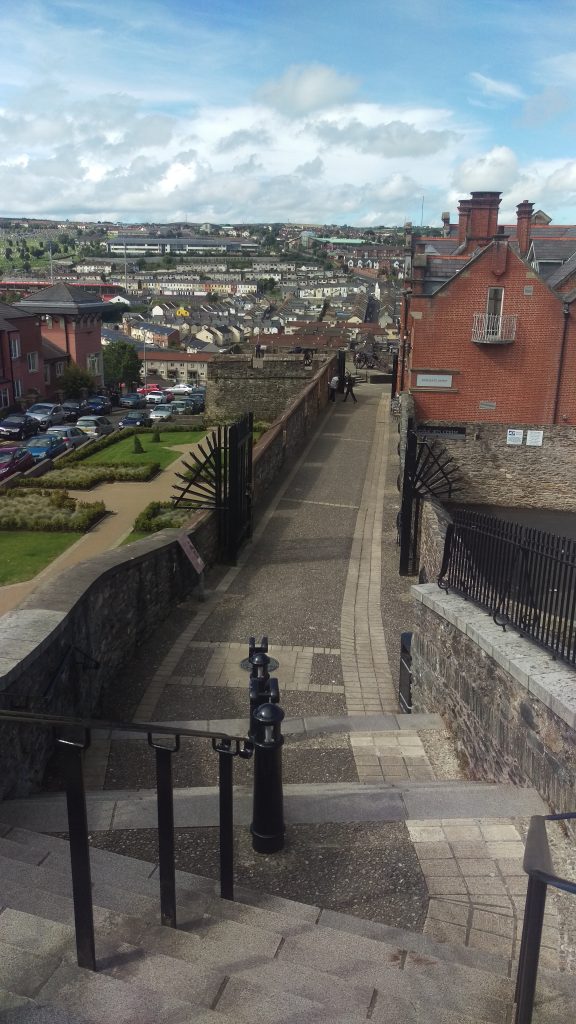
We were getting thirsty and the Verbal Arts Centre, which opens directly off the walls and has a nice coffee shop, presented an ideal opportunity for a drink and a slice of cake. The building was originally a school dating from 1892, but had been restored and reopened as an arts centre in 1995, and is a pleasant place to sit surrounded by artworks.
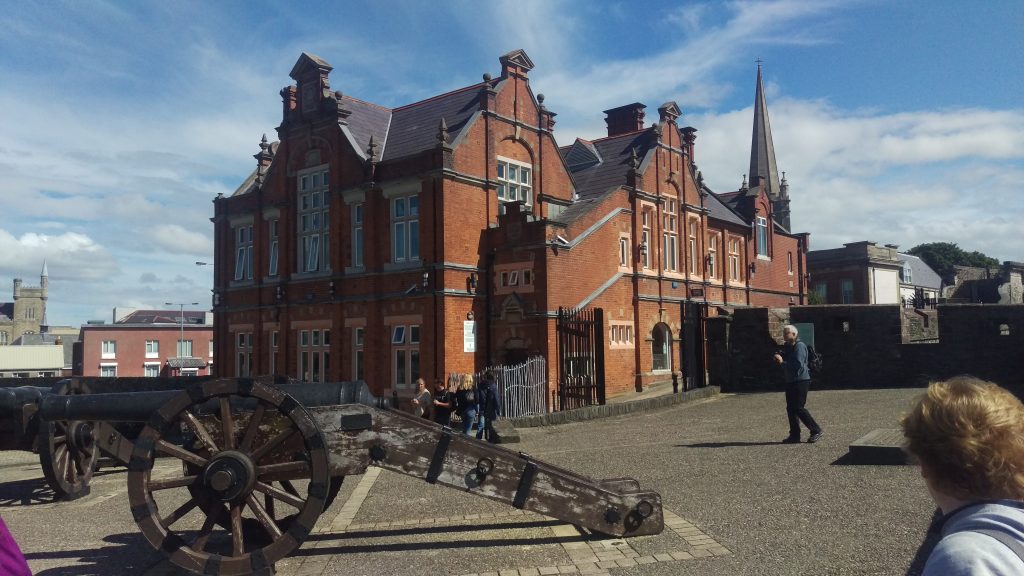
There’s a fine double bastion on this corner, with an expansive view of the Bogside, with its collection of nationalist murals and the Catholic St Eugene’s Cathedral visible in the distance.

We passed a tiny church called St Augustine’s and came to the Apprentice Boy’s Memorial Hall, a museum dedicated to the thirteen apprentice boys who locked the city gates when the armies loyal to James II arrived in 1689, triggering the siege that would last for four months. It’s a strange museum which presents a completely one-sided view of the history of the siege and the later role that the Apprentice Boys of Derry loyalist order played in the Troubles.
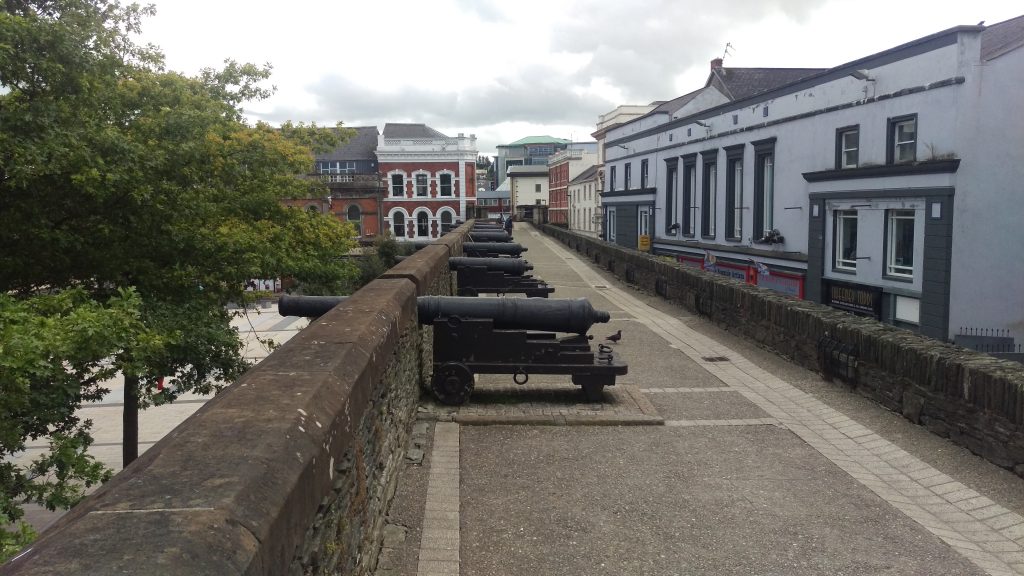
We passed over Butcher Gate and Castle Gate, and rounded the corner where a line of cannons were overlooking the Guildhall.
We then made our way over Shipquay Gate, where we were tempted to visit the Museum of Free Derry, but time was getting short. We passed the Derry Central Library and the Millennium theatre at the final corner, before passing over New Gate, which is the one gate that isn’t actually a gate, and made our way back to Ferryquay Gate where we started.
We spent a little time inside the walls, where the city is built around a central diamond, but the walls were by far the most interesting part.

